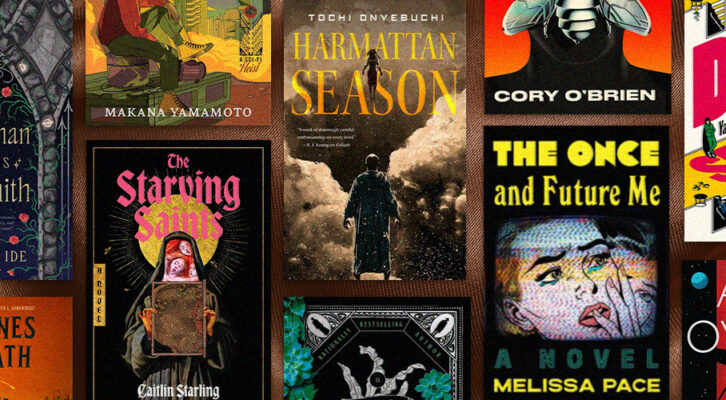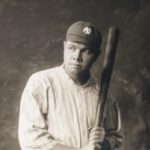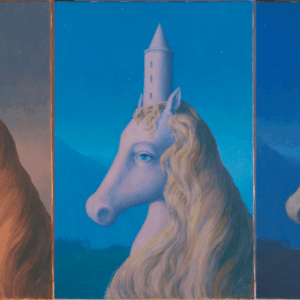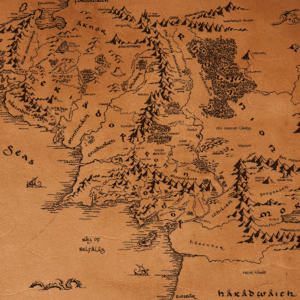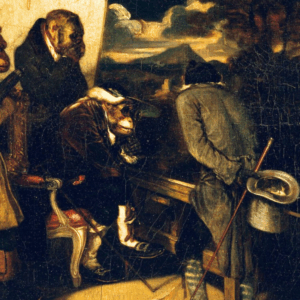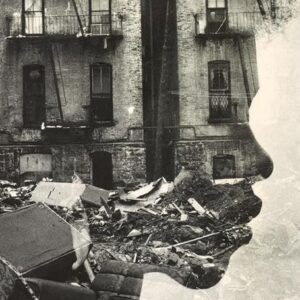
Interview with a Gatekeeper: Lee Boudreaux
From Rural Virginia to Her Own Imprint
Lee Boudreaux, editor of her new namesake imprint at Little, Brown, grew up in Coles Point, Virginia, a rural community on the Potomac River where “people made money crabbing and oystering.” The nearest bookstore was in Richmond, a half hour away, and the nearest movie theater played only one movie at a time. According to Boudreaux, it hasn’t changed much…
The debut title from Lee Boudreaux Books, Your Heart is a Muscle the Size of Your Fist by Sunil Yapa, hit shelves on Tuesday. We talked with Lee about how she ended up with an imprint of her very own.
Kerri Arsenault: How did you come into editing?
Lee Boudreaux: I was a double major in English (because that’s what I really liked) and government. Government was going to be the practical thing because I figured as far as I was going to get was Washington, DC and it seemed to be a professional path that was within the realm of possibility. I took the classes I wanted to take, got out of college, went to Europe with my roommate with a Eurail pass and all that. I put absolutely no thought into what I was going to do after college. Zero. It wasn’t until I got back that I thought; now I need to worry about getting a job. It was not a great economic moment in 1990, however. A friend of mine had worked at a big law firm and she said, Why don’t I introduce you to the people there? I considered law school—it’s what a lot of English majors did. It’s interesting to me now how many lawyers I’ve published. There’s something about the retelling, the assembling of a logical arc, about planting the clues and so forth that is believable and compelling. There’s a similarity in the way your mind needs to work, too. The logical progression of the narrative, the planting clues, the revelations and also just imbuing it with the emotional truth of the moment. That’s what a fiction writer has to do.
So I dithered around after college, worked as a paralegal in asbestos litigation for a defense firm. Then, my college roommate’s mother handed me a book one summer that said “Jobs for Bookworms” and in there was a chapter on the Radcliffe Publishing Course, which of course I had never heard of. I ended up applying but I really had no idea how people in the publishing industry went to New York or got jobs in New York.
After the course, I worked for this tiny little press called Longstreet Press and at a giant Barnes and Noble. I worked for free for Longstreet from 9 to 12 then around 2pm I went to Barnes and Noble and opened boxes of books for nine hours a day. In my free time, I summarized depositions for the law firm, which paid for everything else I was doing.
I took the Radcliffe course in the summer of ‘94 and decided to come to New York and take a crack at the publishing business and just ended up staying and staying and staying and staying…
KA: You seem very detailed in the scope of your editing. Does that come from summarizing all those depositions?
LB: The thing about learning how to become an editor is that it’s this weird apprenticeship kind of job. You learn by watching other people around you and by following your own instincts. You listen to how other editors talk about their stuff. You learn by watching your boss. If you’re a smart assistant you not only study what your boss does but maybe even ask other editors if you can look over an edited manuscript to learn how to do it. I probably didn’t do that as much as I could or should have. In college I always thought it was up to me to sink or swim, so I think I did that in my professional career as well. I thought I’d be sent packing any moment but it didn’t happen.
Ann Godoff at Random House gave me my first manuscript to edit and I was so hesitant on how to do it that I began sticking post-its on the page thinking, How dare I start writing on somebody’s manuscript? I ended up editing the entire 400-page manuscript on post-its. So I put this huge manuscript full of post-its in Ann’s office and she never said anything. I don’t know if she gave it to the author or chucked it in the trash. You really learn by trial and error.
I am detailed but it’s largely because that’s how my brain works. The editing process is asking every question that occurs to you and reading the manuscript as carefully as anyone is ever going to read it. This is the time to ask those questions and it is always the author’s…well, they have permission to reject anything, it’s just that you’re raising the question. I believe the author always has a better idea on how to solve the problem than anything I would suggest.
KA: How do you choose what you choose?
LB: The hardest question to answer is: What do your books have in common with each other. Given this opportunity to have my own line of books I kind of owe it to Little, Brown to come up with an explanation. What do I choose? I don’t have any preconceived notions. I don’t have any kind of book I like or don’t like. The first thing that hits me is the voice. There’s usually a sentence in the first couple of pages that just surprises me, or delights me, or goes where I didn’t think it would go, or the word choice was interesting, or the humor gave it an extra spin. Once I hit that moment I think, Ok, let’s see where this goes. When I see that sentence I realize I’m in it for the long haul.
I’m a little bit of a plot junkie. I like stakes in my books. Sometimes storytelling gets a bit of a bad rap. “Plot’s easy” or “there’s a higher art we are all aspiring to.” Yes, first and foremost we are all aspiring to that art but I also think it has to have a certain propulsiveness, a certain thing that’s keeping me turning the pages. No matter how great the voice is you will have problems in the plot that will enable somebody to put it down. There are too many things competing for everyone’s attention to allow anyone to put that book down. I don’t want the reviewer to put it down because they’ve got 50 galleys stacked up. I don’t want the reader to put it down. The book I did, The Story of Edgar Sawtelle was a 900-page manuscript by somebody no one had heard of with no fancy CV, no awards, so-and-so’s under 40… It had nothing going for it that made people pick it up. It was all going to be in the narrative alone, the quality of the writing. I never thought that book should be shorter.
KA: Do you think editors impose themselves on a book in any way, word count included?
LB: The author of Edgar Sawtelle, David Wroblewski, asked if I had a word limit I was aiming for and I said no, we are going to do this word by word by word. This book needs to be as long as it needs to be. Books can be long, with tangents, strange interludes, a weird backstory. There are no rules. But when I go in and edit I read to make sure whatever that strange thing is we have done it with the right balance. Things have to add up, the velocity needs to be there, you’ve got to have that quality of language and some forward movement at every stage even if it’s not what we think of as “plot.” You have to get somebody pushing back. Authors have such great answers to these questions.
KA: Speaking of choices, why did you choose Sunil Yapa’s book as the imprint’s lead title?
LB: When I got to Little, Brown I knew I needed a few things to talk about and I thought, Great, I will sit out the first list and learn how to do things here. I tend to buy a lot of first timers or somebody who’s published one or two books and they haven’t done what you wanted them to do. I don’t want anyone saying the track records prevent us from taking on these books. We have to be able to do it.
KA: So you take each book on its own merit?
LB: Exactly. When the book delivers what you say it delivers, it can be done. It must be done. It is one of the things publishers are here for. We cannot just look at somebody’s track record and say, Nope, there’s no chance we can reinvent them. When the book delivers it can be done.
KA: Why Your Heart is a Muscle the Size of Your Fist?
LB: I don’t buy that many things. I’m probably going to do between eight and ten books here, and that’s the level I’ve been at forever. That’s kind of how many times you can honestly fall in love with something and be hugely enthusiastic about it. Last January Sunil’s book came in. I got it on a Thursday night and I was home editing that Friday and I just thought, I’m going to dip into this thing that kind of sounds cool. I knew nothing about the Seattle riots. I started reading and I gobbled it down and finished it the next morning. It was so energetic, so propulsive—the language, the voice. And it was unbelievably economical. He’s doing seven characters in something I read in an evening and a morning. It was so fast and furious and taut and he breathed so much life into so many characters.
I went to my boss and said I don’t think we should wait to the next starting line. At Little, Brown, we do two lists a year instead of three. If we waited, I thought I’ll be crowding my own books out. This novel is a great one to launch the list. It feels like Billy Lynn’s Long Halftime Walk by Ben Fountain. It felt like Fourth of July Creek by Smith Henderson. It felt like Sisters Brothers by Patrick DeWitt. Not that they are all thematically similar but Sunil’s felt like part of the family of those other books.
KA: Maybe that’s what’s similar about your books, their dissimilarity…
LB: It’s an intensity of experience I’m looking for. Sunil’s book needed almost no editing. His first draft was stolen and he head to rewrite it and it became this incredibly taut book. It came in good to go. We did the lightest edit with it.
KA: What are your thoughts on today’s publishing model? Does it make sense anymore?
LB: It’s something we all jostle with all the time. You find yourself moving books up and slowing them down and doing all sorts of things because of internal timing issues, external timing issues, but they all end up being important. The one thing I’ve learned more than anything else is you have give books time to do what they need to do out there in the world.
KA: How do you give a book time?
LB: I try to give my authors the time to set up the groundwork and then let things percolate. I bought Sunil’s book last January and said we can publish it the following January. I wasn’t doing any short schedule. A year from acquisition to publication is perfectly long. I didn’t buy something and say we need to publish this in five months. It wasn’t that kind of book. We wouldn’t have had the blurbs, the word of mouth, etc.
KA: So you go along with the schedule but at the same time you put it in the schedule where it’s going to do its best.
LB: Exactly. I’m terrified of doing books in the fall because you get crowded out by the giant name brands. I absolutely want to take advantage of January, February, and March. There are books where you don’t want this year-long process. Some you try to do quickly while it’s relevant, if it’s from the headlines. But you don’t want people to feel like they’ve read about it in magazines and online a thousand times and there’s nothing new in the book. You get it out there and boom, watch the dynamite go off.
KA: How can editors help authors have livable earnings?
LA: The number of my authors who can make a living by writing alone… I think there are none. Some of them get very lucky. After that fact, maybe they have to do less teaching or whatever their day job but I feel like they are the ones where all the stars align. It doesn’t happen often. It’s true of artists, musicians, and writers. These livelihoods are no longer paying a living wage. It’s terrible.
KA: Another sticky question is how do you try to address the racial and gender imbalance in publishing, if there is one?
LB: Excellent question. [In making a decision about a book] I have always tried to be in my own little bubble, deaf to as much outside noise as I can. Sometimes that noise is… Did everybody else like it? Is someone already bidding on it? I don’t like chasing that hot thing. I want to like what I like. When I bought Prep at Random House eight other editors had already passed on it. Edgar Sawtelle was this weird 900-page thing that landed right before Christmas and luckily I had the flu and was home when other people were probably busy. I try very hard to stay true to my own reaction rather than listen to all of the focus grouping or conventional wisdom. When I bought Sisters Brothers people thought, meh, Westerns don’t work. When I bought Madeline Miller’s Song of Achilles, people were like meh, that genre doesn’t work, the whole the sword and sandals thing.
That said, I was asked one time if I seem to have more male writers on my list than female and I thought, That’s weird. If that’s true, then what is this about? I’ve been thinking about it for two to three years now and I think I’m attracted to extreme and intense stories and those often have odd settings, whether their funny, violent, or dark books. Somebody was talking about a certain big novel a few years ago, about a woman’s life, saying, Who isn’t going to want to read that? And I thought, That isn’t what I want to read at all. I don’t want to read something that closely resembles my life. Does that mean I’m an escapist? I feel that the term “escapist” has this pejorative connotation, like it’s pure entertainment and you’re just running away from the world. I don’t know if I’m an escapist reader, but I am looking for an intensity of experience and something I’ve never come in contact with. I really want it to be weird, to go far, and I think that explains some of the imbalance, if there is one on my list.
KA: It’s not necessarily your list I’m asking about.
LB: For as long as I’ve been in the industry, there’s been talk about how to have a more diverse workforce. It’s a very low-paying industry and attracts people who can sometimes afford to do it. When I was promoted to associate editor at Random House I stopped getting paid overtime. I remember being in tears. I went to my boss and said this is actually a pay cut and if I take on more responsibilities here I can’t work my second job summarizing depositions. I don’t know how I’m going to make up the salary loss. I went to the business manager and instead of giving me a raise according to their formula, they gave me the extra $2,000 to make up for the loss of that second job. Truly, it was a matter of having two jobs for five years. The industry keeps having a certain person come into it because it doesn’t pay a competitive wage.
KA: It’s related to my previous question then: how do authors make a livable wage? If authors could earn more, publishers could pay their people better wages, livable wages, and the industry could open up to a more diverse workforce, which would mean more diverse books being chosen…
LB: It’s all intertwined. I’m not all that unusual from anyone in publishing, but being from a rural background from another part of the country, as somebody who worked two jobs to be here, somebody who didn’t get here until they were 27, I have often been drawn to stories that come from outside, even if that’s only as far as the South (which is not to say I’m stirring the diversity pot much at all). But many of my authors have not been through every MFA program and came with every bell and whistle…
KA: You seem like you have an enormous amount of marketing savvy, which is not necessarily part of an editor’s job. Or is it?
LB: I’ve been lucky to be able to do so few books. When you do eight to ten books instead of twenty books a year, you are afforded the luxury of time and effort to be able to think of books that way. You can then work hard to get blurbs for your books if you’re not trying to do twenty. Getting blurbs is one of the most time-consuming, difficult parts of the job. If I could have one wish about publishing it would be to banish blurbs. Then I’d have so much more time to spend on everything else.
KA: I think many people feel that way, including authors. That’s one way to improve the publishing model, banish blurbs, no?
LB: I would love to do away with that but at the same time I can see sometimes when it works. Blurbs work often inside the industry before they ever work with the consumer. You can see people perk up and take notice. Tracy Kidder just gave me a wonderful blurb for the only nonfiction book that’s on my list for 2016. I can’t tell you how many people emailed me back the minute I sent that blurb around. It truly meant something in-house and it’s going to mean something on that galley when reviewers see it, and it’s going to mean something to booksellers. We’ve got these three huge constituencies before we even get to the consumer.
KA: What is your basic process working with a writer?
LB: I read a manuscript very quickly first, then I sit down the second time and start reading very carefully and do the detail work, the minute hammering on every page. At this point, I know where the story goes so I’m looking for holes. I’m looking for anything that doesn’t add up. The best way to edit is to live entirely in the world as much as you can. Before I had a child I would edit ten hours on Friday ten hours on Saturday and ten hours on Sunday (obviously I had no hobbies or any nee to go outdoors). You knew everything about the book. You were in tune with every character. You have the voice in your head. Then the author gets a hugely marked up manuscript with all these little scribbles. I’m asking them every question that occurs to me. I give them as much time as they want to sit and digest it. Again, this is one of the reasons I like working far in advance. I have time with the manuscript and they have time with the manuscript. I’m happy to let them work in peace and quiet.
Then we go back and forth as long as is helpful to them. They do the revision and it lands on my desk again. I read it again beginning to end. I assume it doesn’t need a line edit at that point, although I tend to read with a pencil in my hand. There could be one big thing still sticking in your craw that didn’t get fixed, so you just roll up your sleeves…
Kerri Arsenault
Kerri Arsenault is a literary critic, co-director of The Environmental Storytelling Studio at Brown University; Democracy Fellow at Harvard’s Charles Warren Center for Studies in American History; fellow at the Science History Institute in Philadelphia; contributing editor at Orion magazine; and author of Mill Town: Reckoning with What Remains. Her writing has been published in the Boston Globe, The Paris Review, the New York Review of Books, Freeman’s, the Washington Post, and the New York Times.











